Deep within the rugged Lancashire countryside is Gresgarth Hall, the country home of the inspirational landscape designer and plant collector, Lady Arabella Lennox-Boyd. Over the past 40 years, Arabella has transformed the land at Gresgarth into a wonderfully romantic garden.

Arabella Lennox Boyd's Gresgarth Hall
When Arabella Lennox-Boyd arrived at Gresgarth Hall in 1979, there was practically no garden, and the space was neglected and overgrown. Clumsy lumps of sombre evergreen rhododendron and laurel hemmed the house in rather harshly from the surrounding countryside and completely obliterated any views. “It took a bit of time to get used to this garden,” she says.
Discover other gardens by Arabella Lennox Boyd
Having grown up on an Italian hillside, Arabella was more accustomed to views that stretched for miles. Trees were felled, evergreens removed, and the woodland was pushed back from the house to make space for a garden, and to open views from the house across the river and into the woods beyond. This necessary clearing did, however, reveal the garden to the prevailing west wind. “It was one of my first concerns,” says Arabella. “How to slow the wind from coming in and hitting the hills, eddying and causing damage to the garden.” So hedges were planted for protection, but these also presented an opportunity to divide the garden up into different spaces. Large borders with clipped trees, beautiful double herbaceous borders and stone terraces were laid out closer to the house where she wanted more formality.

Yew hedging frames these borders, and the different areas of the garden are linked via intimate paths. Where the paths intersect, small circles of yew have been planted and are draped with wisteria, displays that Arabella describes as “little theatres”. The paths eventually lead to the kitchen garden, working areas, and a Chatsworth-inspired wavy corridor of beech hedging. Arabella has carefully managed the design to take full advantage of an existing lake and a brook, Artle Beck, that runs through the garden and creates a magical atmosphere.
IN BRIEF
What Gresgarth Hall, home to designer Arabella Lennox-Boyd, with formal areas blending into woodland and arboretum.
Where Lancashire.
Size Ten acres.
Soil Acid to neutral, woodland and alluvial soils.
Climate Temperate.
Hardiness zone USDA 9.
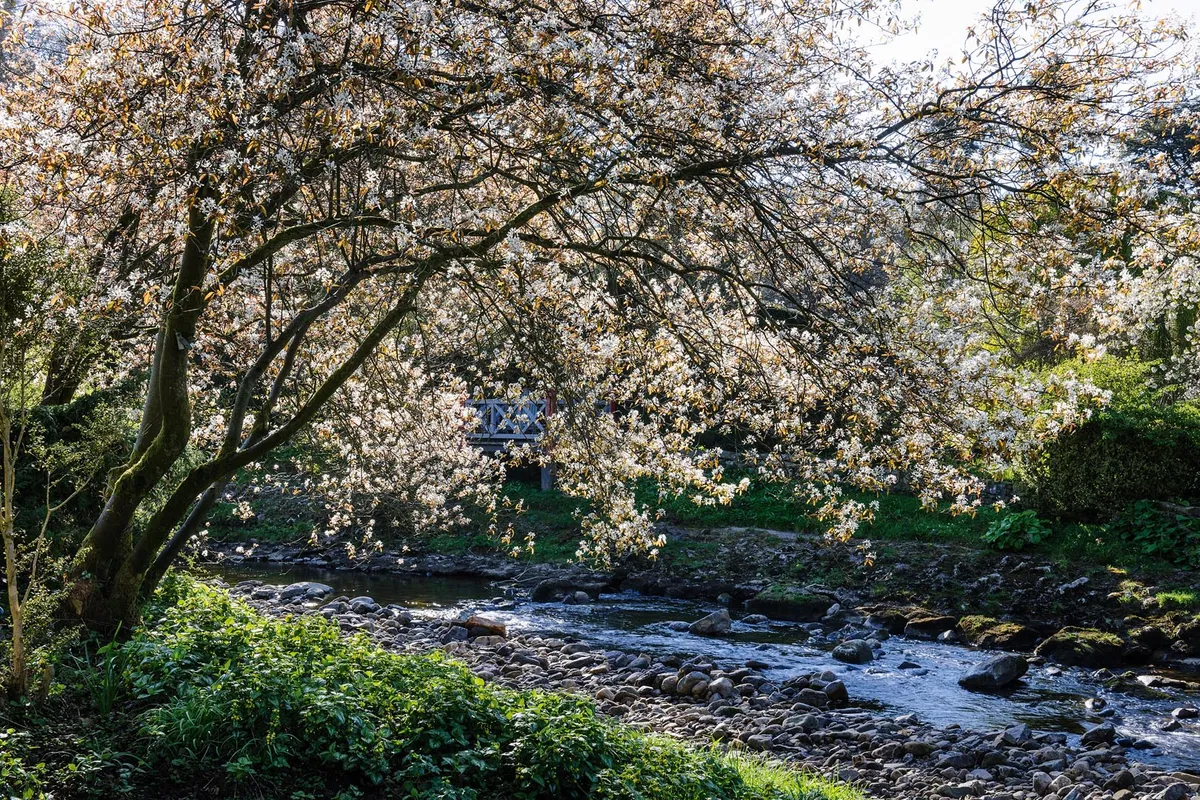
The garden and lake at Gresgarth Hall
The lake was much smaller when she arrived at Gresgarth. “I wanted to create the feeling the river was flooding this area, even though it is actually much lower, so we enlarged it by three to four times the original size,” says Arabella. The still water reaches the house terrace and is a picture of reflections, of the white blossom of a Prunus ‘Shirotae’ that spreads above the water and a weeping katsura tree. The Artle Beck, by contrast, is noisy and playful and the sound reverberates through the garden. Yew buttresses are lined out equidistantly on both banks and gently firm the garden around the brook.
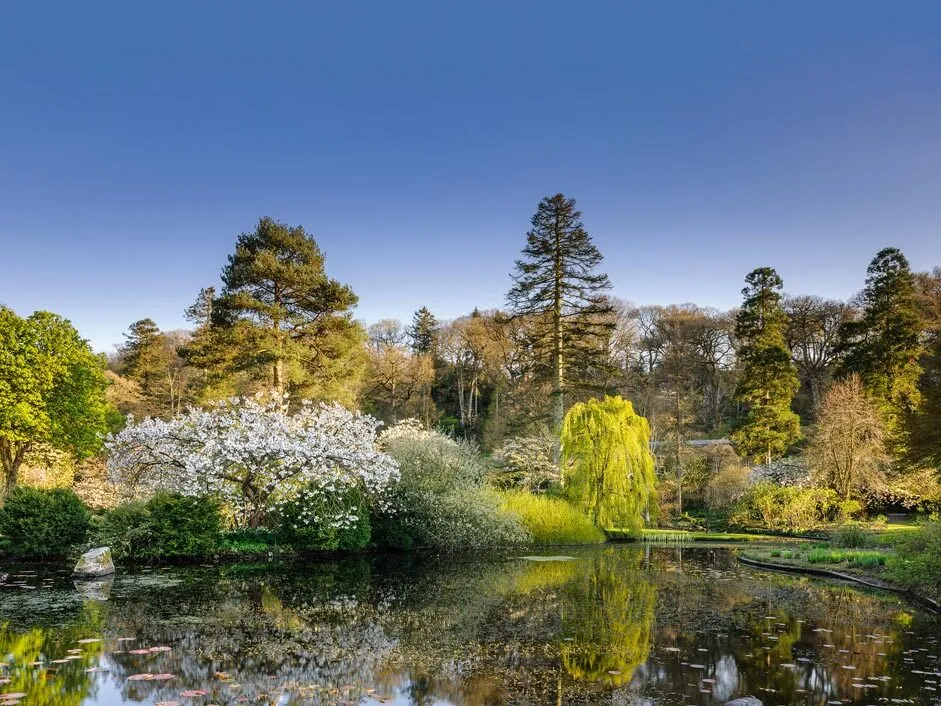
The planting at Gresgarth Hall
The garden continued to grow quite organically, but carefully. Arabella went on to develop a more formal open lawn area that features a very old Robinia pseudoacacia with wonderful fissured bark that acts as a host for different types of epiphytes. This area has a different atmosphere from the more complex plantings nearby and is enclosed by more yew hedging that forms a semi-circular boundary. On the slopes of the valley ascending from the Artle Beck, the garden becomes much more natural, and it is here that Arabella has created a world-class arboretum of rare and special plants, including a thriving collection of 200 magnolias. Drifts of Daphne bholua (grown from seed at Gresgarth), swathes of cherries, and rhododendrons all flourish under her watchful eye. The arboretum is also home to Gresgarth’s National Collection of plants from the Styracaceae family.
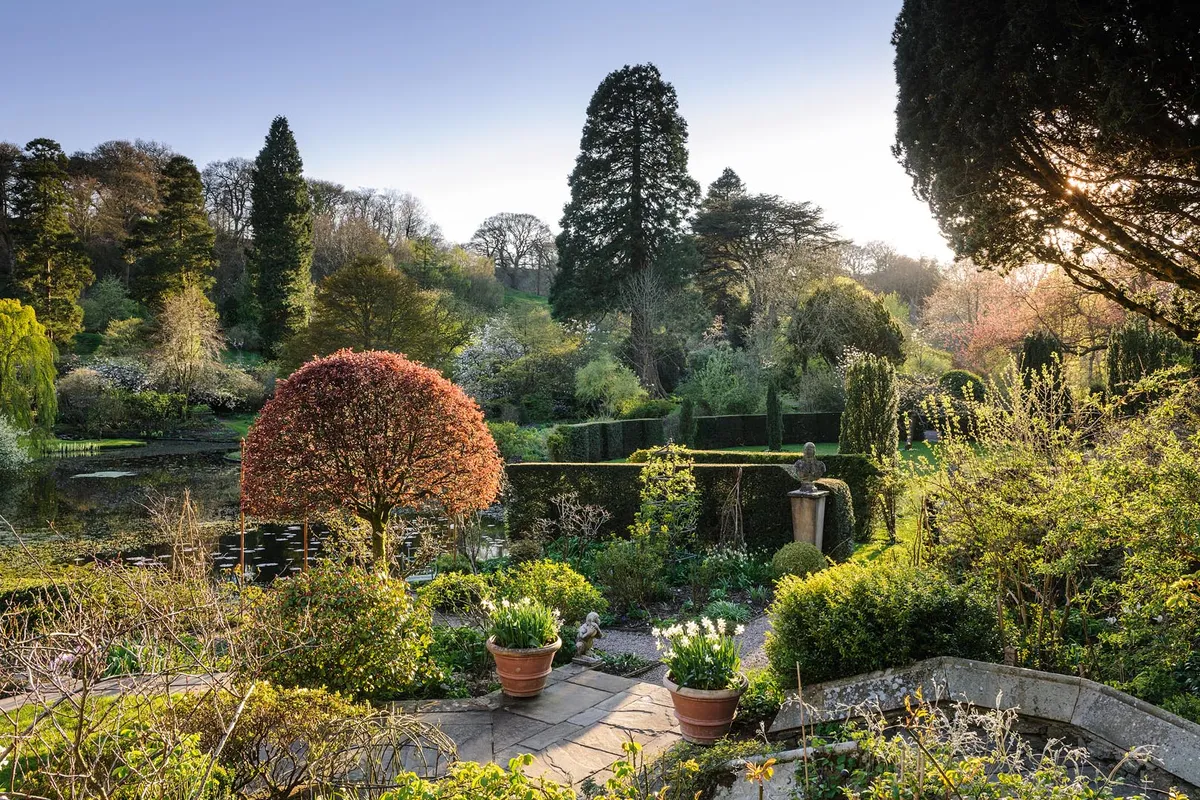
Gresgarth Hall today
As you draw closer to the countryside beyond the garden, the curved lines of the hedging and the plantings continue to feel more naturalistic and less formal. On the western edge is The Wild Garden, with big borders of trees and shrubs that help to shelter the garden from damaging wind and create a link to the countryside. Despite the extensive work that has gone into creating the garden at Gresgarth, it sits so comfortably with the house and the surrounding landscape that it feels as though it should have always been that way – as if they have grown up together. Arabella has created a truly magnificent garden, and one could quite happily wander for many hours enraptured and captivated by the enchanting atmosphere.
Read our interview with Lachlan Rae, senior gardener at Gresgarth Hall.
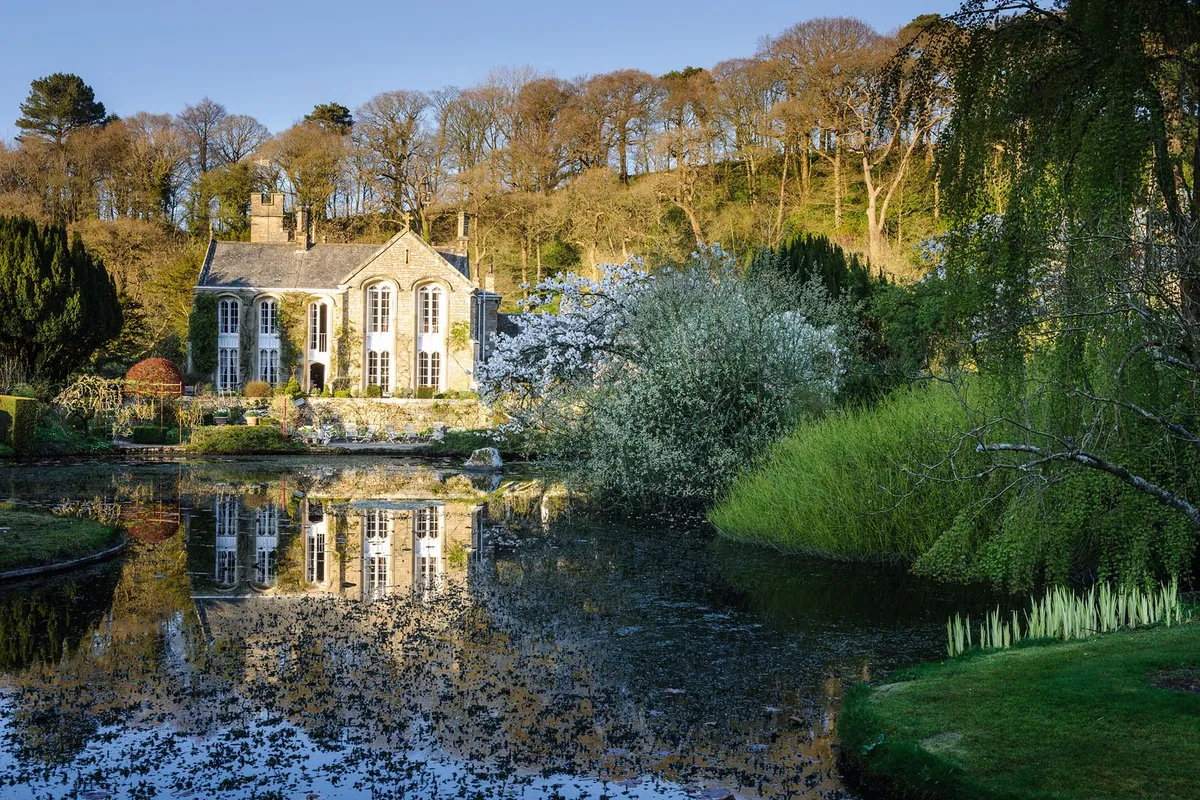
12 key plants at Gresgarth Hall
1
Rhododendron yunnanense

One of several rhododendrons grown in the woodlands. A very garden-worthy rhododendron, it makes a large, semi-deciduous shrub, which is smothered in soft pink blooms in May. Plant in groups for spectacular effect. 4m. RHS H5, USDA 7a-9b.
2
Magnolia stellata

An excellent and very floriferous magnolia that is ideal for smaller gardens. It forms a small, shrubby tree that is covered in pure-white flowers from head to toe before the foliage is produced. 3m. RHS H6, USDA 4a-8b.
3
Mahonia aquifolium
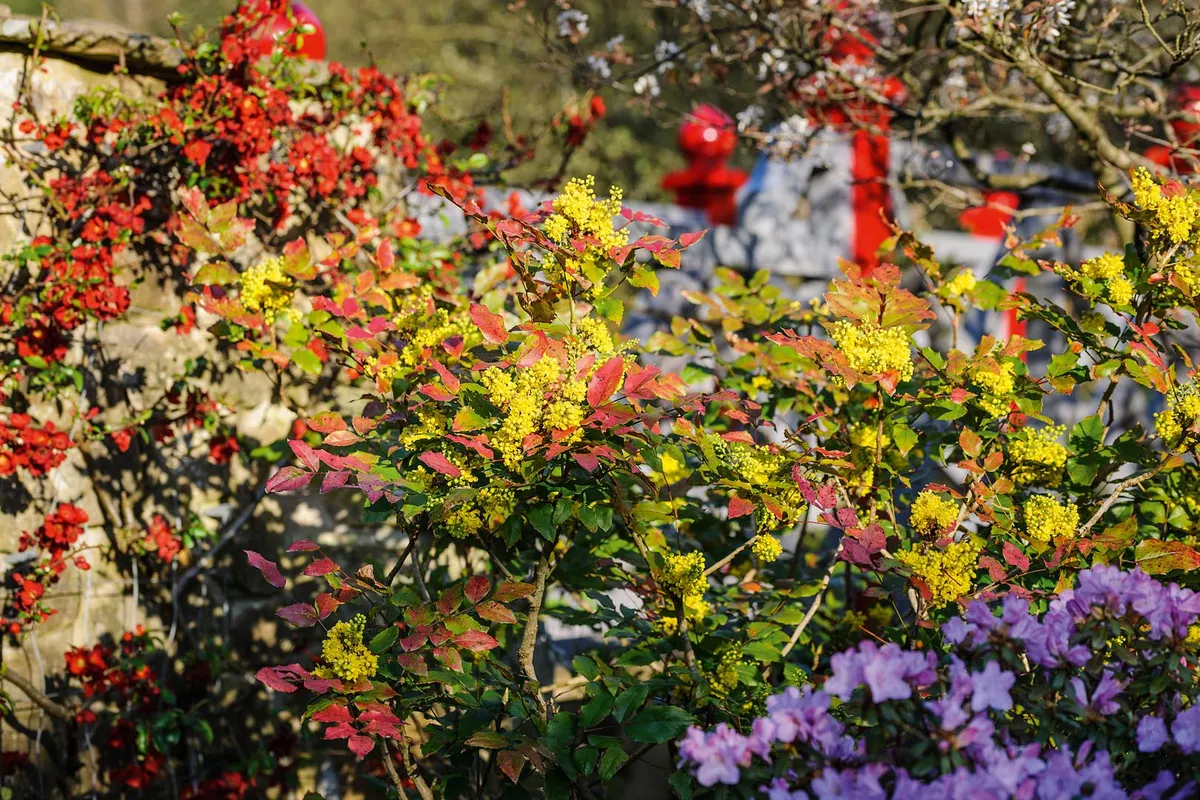
A tough, evergreen shrub that spreads slowly via suckers. It makes a springy mass of polished, prickly, pinnate foliage that can often turn red in winter. Yellow flowers are produced in spring. 1.2m. RHS H5, USDA 5A-8b.
4
Erythronium californicum

A very popular and easily cultivated hybrid trout lily. It increases quickly in the garden, making clumps of lustrous mottled leaves and white Turk’s cap flowers with yellow centres. 30cm. AGM. RHS H5. *Holds an Award of Garden Merit from the Royal Horticultural Society. Read our plant profile on erythronium.
5
Narcissus ‘White Lady’

This old florist’s daffodil has long stems topped with sweetly scented blooms, each with white silky petals and a small yellow cup. It is a beautiful perennial daffodil for meadow planting. 45cm. RHS H6, USDA 4a-8b. Read more on narcissus.
6
Scilla liliohyacinthus

The Pyrenean squill is a lively self-sowing bulb for the flower garden. It quickly makes carpets of green foliage, and lavender-blue flowers are produced in the spring. 25cm. RHS H6, USDA 3a-8b. Read our plant profile on scilla.
7
Magnolia ‘Star Wars’

A recent and excellent cross between M. campbellii and M. liliiflora. It grows into a smallish tree and produces masses of pink flowers in spring just before the foliage emerges. 6m. AGM. RHS H5, USDA 5a-8b. Here's perfect yellow magnolia.
8
Tulipa ‘Ronaldo’

A triumph tulip that is suitable for the border, containers or for cutting and is very weather resistant. The burgundy-coloured flowers are held just proud of the foliage from April to May. 40cm. RHS H6, USDA 3a-8b. For more on tulips read our piece on Arne Maynard's rare tulips.
9
Rhododendron fastigiatum

A good dwarf rhododendron for the front of a border. It forms low mounds of evergreen blue-green foliage, atop which trusses of amethyst-blue flowers are produced in profusion. 1m. RHS H6.
10
Prunus ‘Shirotae’

a spreading habit. It produces white, fragrant, single or semi-double blooms held in drooping clusters in spring. 3-4m. AGM. RHS H6, USDA 5a-7b.
A particularly beautiful Japanese cherry that has a spreading habit. It produces white, fragrant, single or semi-double blooms held in drooping clusters in spring. 3-4m. AGM. RHS H6, USDA 5a-7b. Here's more on cherry trees.
11
Cardamine heptaphylla

A choice early flowering woodlander that makes slowly creeping clumps of fresh-green foliage topped with loose sprays of clear-white flowers. Provide moist and humus-rich soil. 30-45cm. RHS H7.
12
Prunus ‘Tai-haku’

The tree better known as the great white cherry makes a decent-sized tree and will flower exuberantly, throwing masses of large, white flowers over the whole tree in the spring. 12m. AGM. RHS H6.
Gresgarth Hall open days
Gresgarth Hall is usually open to visitors on one Sunday every month from February to November, 11am-5pm (3pm in winter). Check the Gresgarth Hall website to confirm current opening times.
Address Gresgarth Hall, Caton, Lancashire LA2 9NB. Tel 01524 771 838
Find out more about Arabella Lennox-Boyd's work at arabellalennoxboyd.com
Discover more about Arabella and Gresgarth Hall on the Sky Arts documentary The Art of the Garden.
